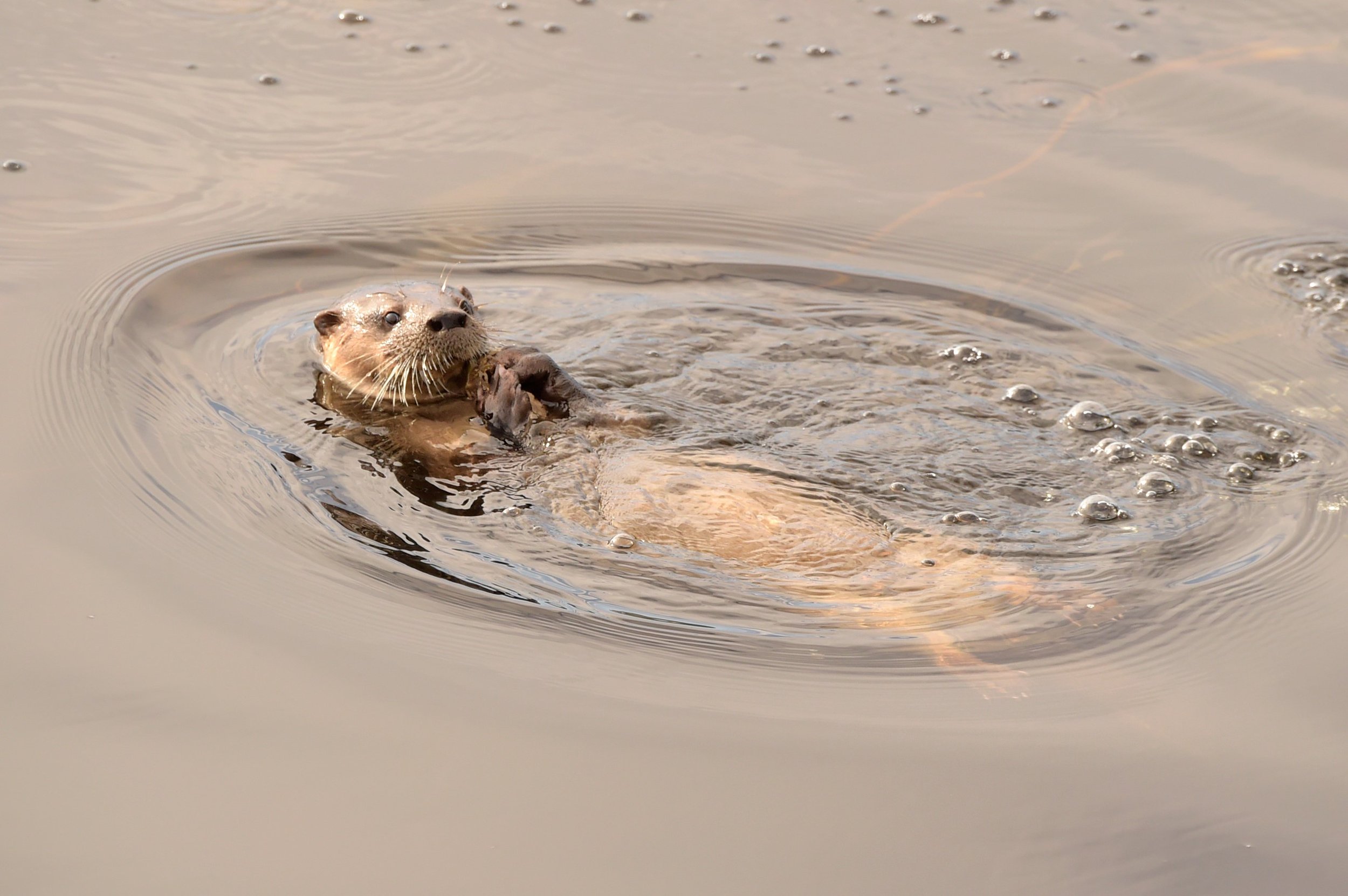Southern River Otter (Lontra provocax)

©Jeremie Goulevitch
QUICK GUIDE
SIZE - 1 -1.2 metres
WEIGHT - Up to 9kg
DIET - Mainly fish, crustaceans and molluscs
OFFSPRING - 1/6 cubs
HABITAT - Lakes, rivers, rainforest, marshes and marine coastline
CONSERVATION STATUS - Endangered
The Southern River Otter (Lontra provocax) or “Huillin” as they are known in Chile, can grow up to 1.2 m and can reach 9kg in weight. They sport a dark brown fur on top, with lighter shades underneath, and can be seen with grey markings around the throat area. They are another otter that has well developed webbing and claws on their paws.
With the smallest geographical range of all the otters, the Southern River Otter is found only in the southern parts of Chile and western Argentina and in particular the humid forests of Patagonia. There is also an isolated population on Staten Island, an island situated off the south-western tip of the Tierra del Fuego archipelago.
Found mainly in freshwater rivers, lakes and lagoons, often within dense forests, the Southern River Otter’s dependence on crustaceans, such as crabs and crayfish is very limiting on their distribution. However, this is not the only food source they will take, as they have been seen to also eat such things as fish, small birds and amphibians. The home range of the freshwater based animals is around 11km, with good bankside vegetation needed to provide shelter for holts. These holts are usually no further than 50m from the water and are often in rock crevices or the root systems of trees. Despite the name, there are also small populations that can be found along certain sections of marine coastlines.
© Vanessa Durán Sanzana
© Vanessa Durán Sanzana
The Southern River Otter is a mostly nocturnal animal and in the main will lead a solitary life. Mating season for these otters takes place between July-August, resulting in usually two cubs, although it can be up to four. After entering the world, the newborn cubs will stay with their mother for around a year, before venturing off on a journey to find their own home range.
©Michael Weymann
Currently, the IUCN Red List status for the Southern River Otter is Endangered and decreasing. This rare animal has suffered a large decline over many years, which up to the 1970’s was largely due to hunting for pelts, as one pelt could fetch the price of up to three months wages for the seller. The Southern River Otter is also very vulnerable to habitat destruction. For the freshwater population, wetlands are being drained in order to provide pasture for cattle, and tree felling. In 1986 an Irrigation Law was passed in Chile, designed to encourage more land drainage, with a grant aid of up to 75% of the costs for farmers, resulting in the removal of vegetation and rivers being canalised. For the coastal populations, increased pressures from fisheries are the main threat to the survival of this species. With the threats to both the freshwater and coastal populations combined, the future is very uncertain for the Southern River Otter.




